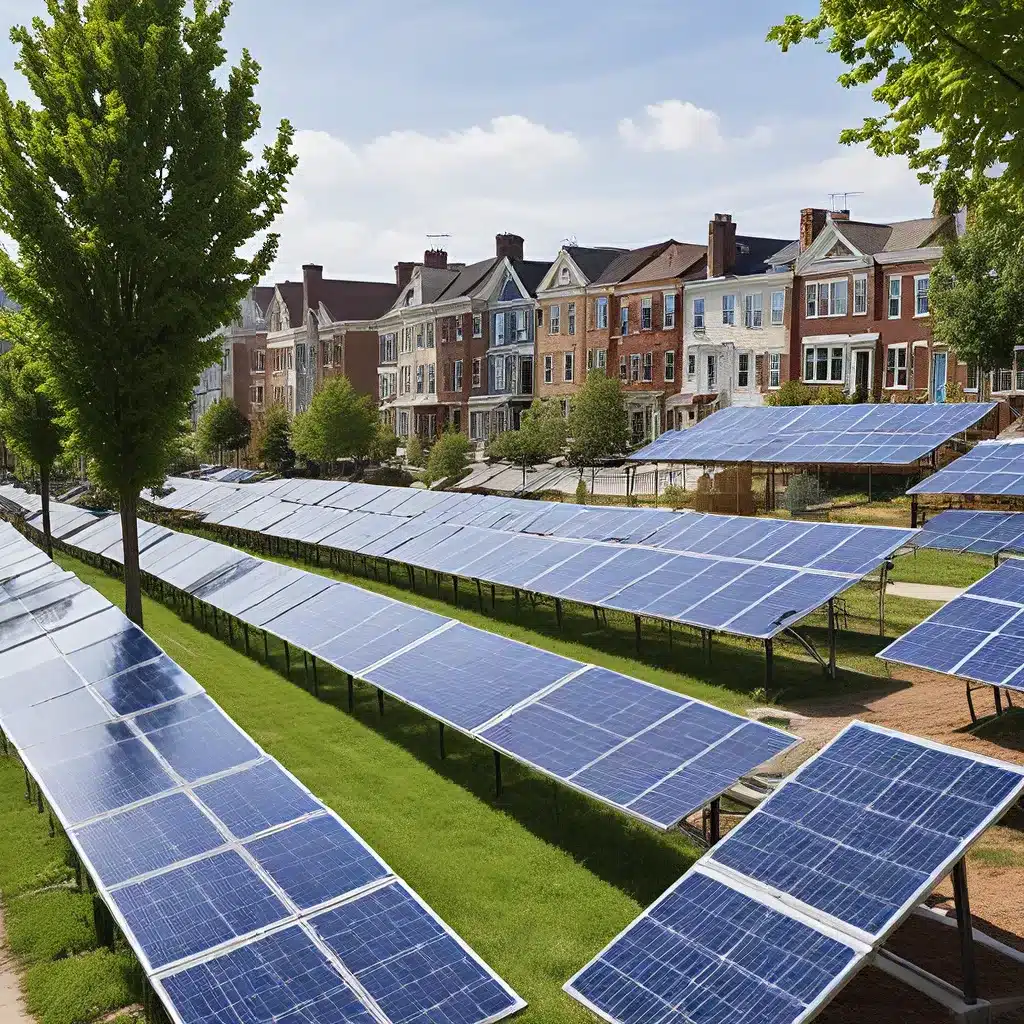
As someone who’s passionate about sustainability and affordable energy, I’ve been on a mission to uncover the best renewable energy solutions for underserved communities. These neighborhoods often face unique challenges when it comes to accessing clean, cost-effective power – and I’m determined to change that.
Shining a Light on the Energy Affordability Gap
Did you know that the national average energy burden for low-income households is a staggering 6% – that’s three times higher than the 2% burden for non-low-income families? In some areas, it can even reach 30%! This disproportionate energy burden is a serious issue that keeps many families in a vicious cycle of high costs and limited options.
But why does this gap exist in the first place? Well, it turns out there are a few key factors at play. For one, low-income households are more likely to live in energy-inefficient homes with poor insulation and outdated appliances. This means they end up spending a lot more on utilities like electricity and gas.
Another issue is that 52% of low-income households are renters, not homeowners. This “split incentive” problem means landlords often lack the motivation to invest in energy-efficient upgrades, even though those improvements could significantly lower their tenants’ bills.
Compounding these challenges, many underserved neighborhoods also face barriers to accessing clean energy technologies like solar panels. According to a Lawrence Berkeley National Laboratory report, only 23% of solar PV adopters were classified as low-income, compared to 45% for low-and-moderate income households. Lack of access to financing and credit can be major roadblocks for families trying to go green.
Illuminating Solutions: Powering Up Underserved Communities
But it’s not all doom and gloom! There are some brilliant renewable energy solutions emerging that have the potential to transform underserved neighborhoods. Let me shine a light on a few of them:
Community Solar: Sharing the Sunshine
Community solar projects allow multiple households to share the benefits of a single solar installation. This model is a game-changer for renters and homeowners who can’t install panels on their own roofs. By pooling their resources, low-income families can access clean, affordable power without the upfront costs of a private system.
These community-based initiatives are popping up all over the country, often with the support of local governments and nonprofits. Take the example of the Solstice Initiative, a company that’s making it easier for underserved communities to go solar. They partner with utilities and developers to create community solar farms, then connect low-income subscribers to the power at discounted rates. It’s a win-win for everyone involved!
Energy Efficiency Upgrades: Sealing the Leaks
Another powerful solution is investing in energy efficiency retrofits for low-income homes. Simple upgrades like better insulation, LED lighting, and ENERGY STAR appliances can dramatically reduce energy bills and improve indoor air quality.
What’s especially exciting is that many of these weatherization projects also create local green jobs. When communities hire contractors and workers from within, they’re not only shoring up their housing stock – they’re also generating much-needed employment opportunities. It’s a holistic approach that tackles both energy and economic inequities.
The Department of Energy’s Weatherization Assistance Program (WAP) is a great example of this in action. Since 1976, WAP has helped millions of families save hundreds of dollars each year on their energy costs. And research shows these upgrades don’t just save money – they also improve health outcomes by reducing exposure to mold, drafts, and other indoor pollutants.
Microgrids: Powering Up Resilience
One particularly exciting development in the renewable energy space is the rise of microgrid technology. These small-scale, decentralized power systems can operate independently from the main grid, providing a crucial lifeline during outages and emergencies.
The Department of Energy recently announced $105 million in funding for microgrid projects in underserved and indigenous communities. These innovative systems harness the power of renewable sources like solar and battery storage to deliver reliable, resilient electricity – even when the grid goes down.
What’s so transformative about microgrids is that they empower local communities to take control of their own energy destiny. By reducing reliance on the centralized utility infrastructure, underserved neighborhoods can become more self-sufficient and less vulnerable to external disruptions.
Illuminating the Path Forward
As I’ve delved deeper into this topic, I’ve been struck by the incredible potential of renewable energy solutions to uplift underserved communities. From community solar to weatherization to microgrids, there are so many innovative ways to make clean, affordable power more accessible.
Of course, we still have a long way to go. Barriers around financing, policy, and public awareness continue to limit widespread adoption. But I’m encouraged by the progress I’m seeing – and I’m hopeful that with continued advocacy and collaboration, we can bridge the energy affordability gap once and for all.
What do you think? I’d love to hear your thoughts on the renewable energy solutions that hold the most promise for underserved neighborhoods. And if you’re curious to learn more, be sure to check out the Firewinder website for even more insights and resources. Together, I believe we can create a more sustainable, equitable energy future for all.

